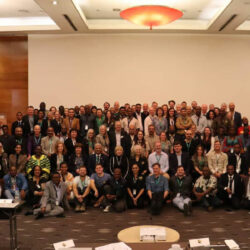CCF Statement on Reintroduction of Cheetahs in India
-

- by CCF Staff February 28, 2011
FOR IMMEDIATE RELEASE: February 18, 2011
Contact: Patricia Tricorache, +1-305-766-8229
In 2009, the Cheetah Conservation Fund (CCF) was invited to participate in a programme by the Indian government to reintroduce cheetahs to that country after nearly 60 years of extinction. The plan, headed by Dr. M.K. Ranjitsinh, who served as India’s first Director of Wildlife Preservation and is now Chairman of the Wild Trust of India (WTI), will reintroduce cheetahs in stages over the next decade, possibly starting in early 2012.
In an advisory capacity, CCF has been working with the WTI and India’s authorities to discuss the best strategies for this reintroduction and has conducted field inspections in order to determine the most viable release areas. The Palpur-Kuno Wildlife Sanctuary, a 344,686 square kilometre (133,084 square mile) reserve in central India, has been chosen for the first reintroduction. The sanctuary is home to many species, including wolves, leopards and nilgai –Asia’s largest antelope.
CCF has made suggestions about necessary infrastructure changes as well as community involvement and education. CCF advises that local communities be counselled in living harmoniously with wildlife, particularly predators, through training and communications programmes. Sustainable tourism will be encouraged so that jobs and business opportunities for the local people can be created. Conservation biologists from India have attended several of CCF’s international courses in Cheetah Conservation Biology, and in Integrated Livestock, Wildlife, and Predator Management. These courses focus on capacity building and mitigating conflict between people and wildlife countries, with a special emphasis on the cheetah. Dr. M.K. Ranjitsinh and colleagues have visited CCF in Namibia.
CCF developed a proven protocol for re-introducing wild-caught cheetahs that allows the animals to perfect their skills in a safe environment before being released. To date, CCF has successfully re-wilded cheetah in two regions in Namibia. Lessons learned from these successes will assist local Indian NGOs with the reintroduction. In addition, CCF will provide an experienced ranger to train local rangers and WTI researchers in cheetah monitoring and behaviour.
The reintroduction has been approved and budgeted by the Government of India. It will return cheetahs to the grasslands ecosystem where they used to thrive. Some parties have voiced their fear that the reintroduction of the cheetah will diminish efforts to save the tiger. There is also concern about the genetic history of Asiatic cheetah. As there are no living Indian cheetahs and, thus, no concern about mixing populations, the Indian programme plans to import cheetahs from Southern Africa. CCF respects the Indian Government’s stance on these issues and is providing assistance when appropriate.
CCF is currently gathering information about animals for possible export to India, and pending all import permits necessary to abide by CITES regulations, cheetahs might be roaming in India once again as early as 2012.
Editor’s notes:
- The Cheetah Conservation Fund is a Namibian non-profit trust dedicated to the long-term survival of the cheetah and its ecosystems.
- Since 1990, the organisation has developed education and conservation programmes based on its bio-medical cheetah research studies, published scientific research papers and has presented educational programmes to more than 350,000 outreach school learners, donated over 375 livestock guarding dogs to commercial and communal farmers as part of the CCF innovative non-lethal livestock management programme, and has established a cheetah genome resource bank of cheetah sperm, tissue and blood samples.
- Research into cheetah biology and ecology has greatly increased our understanding of the fastest land animal and education programmes for schools and the farming community help change public attitudes to allow predator and humans to co-exist. However, despite the many successes of CCF programmes, the cheetah is still Africa’s most endangered big cat with ~10,000 cheetahs remaining.
- In the early 1900s, there were an estimated 100,000 cheetahs in 44 countries. Current estimates of cheetah populations range from 7,500 to 12,500 in 24 African countries and a tiny population of less than 100 individuals in Iran. Namibia is home to an estimated 25% of the remaining world’s population of free-ranging cheetahs.
Related Reading


